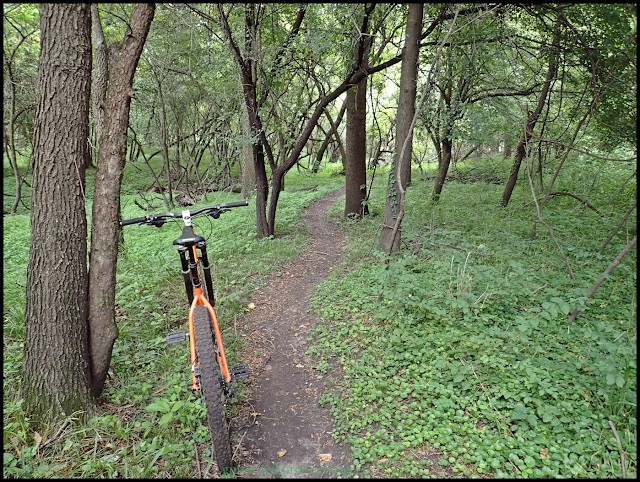GTDRI UPDATE: Just over a week from today we will be exploring about 25 miles of minimum maintenance roads in a route I have devised which is almost 103 miles in total. This will mostly be un-reconned route. Meaning-
expect surprises.
That is- if you come Saturday August 5th, at 6:00am, in Reinbeck Iowa in front of the Broad Street Brewing company. Because that's where the ride starts and ends. If you don't show up, well, then disregard this paragraph and move on.......
I wanted to recon the route, but weekends have been busy, and my Wednesday's off have
all been rainy! It has rained every Wednesday for a month and a half now. Unprecedented! This has meant that I will be tackling this route with a blind eye, to a degree, since I have only done a couple short sections of it so far.
It isn't as dire as it sounds though. Of the 102+ miles, I have been on at least 75% of the roads at least once at some point. This includes many of the dirt sections as well. The part that had me the most concerned I already have reconned, and the rest.......
Oh well! What's an adventure if you already know the outcome? If you want to download a route map, here ya go:
https://www.plotaroute.com/route/445355 DISCLAIMER: I cannot guarantee these roads are there, safe, or that you will not be injured or suffer death if you attempt this route. YOU ARE RESPONSIBLE FOR YOURSELF IF YOU UNDERTAKE THIS ROUTE BY BICYCLE, BY FOOT, OR BY AUTOMOBILE. I nor my family will be held responsible for any actions undertaken by anyone using this information. So there!
 |
| Just about there...... |
#Skinwallstillwinter
The final piece to the puzzle for my Badger rebuild has finally come in. The tires. Skinwall tires, to be exact. I am stoked!
Now the bike will be as I wanted it to be, well......
mostly. Originally it was supposed to be a single speed. I am glad that it is not a single speed now, because I have too many single speed 29"ers as it is. That isn't to say I would never get another single speed. I am thinking about a drop bar single speed gravel bike, actually.......
Anyway, the tires! They are the new Soma Cazadero 50mm tires. They are actually tubeless rated too. Nice! Now I was thinking all along that I wanted a silver wheel set for this bike, but I may rescind that thought from becoming a reality. I am waiting to see what I think about the Cazederos on the black anodized rims. The thought being that the skinwall tire will have a bit more "pop" against a black background than a silver one. If I find myself digging it I may lace up a nicer set of wheels for it, or I may just run those Sun/Ringle' Black Flags into the ground. We'll see.
Either way it is basically what it is going to be now and this has been ten years in the making! I've got a little touch up paint work to tackle on it but that can wait until later in the year. I just need to get this out and ride it now. It's actually one of the reasons I sold my Gen 2 Fargo, since I basically had this bike which could be what that bike was only rarer and custom made for me. It was an obvious choice to me which one I should keep around.
 |
| Me at last year's Gravel Worlds. Image by Gravel Guru |
Gravel Worlds:
"Can I do that again?" That's the question I asked myself after I finished last year's Gravel Worlds. I figured I needed to give this another shot, just to prove to myself that I can.
So, the Guitar Ted Death Ride invitational is really going to be a training ride for me. Same as last year's was. I figure that if I can ride that 102+ mile course that
Gravel Worlds should be a piece of cake. Well.......
it should be. We will just have to see about that!
It will be good to see all the faces I get to see down there and to be able to ride that terrain again will be a good time. The oasis stops are awesome too. I just really enjoyed the ride last year, (except maybe that low point around Mile 85 or so!) , and finishing was sweet. Iwant to put another one behind me and use that as a stepping stone to the 200 miles that will be the
Spotted Horse Gravel Ultra in October.
So now things get a little more serious. I kind of maintained through June and July, since the Spring was kind of a busy one. Now I'll have about three more months of packing in a lot of gravel stuff before Winter starts to show up on the horizon and I dig my fat bikes out again.
Sheesh! I probably need to clean those up from last Winter yet!
That's all for this week! have an awesome weekend and ride those bicycles!


















